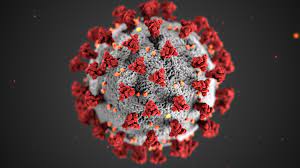
The U.S. Centers for Disease Control (CDC) sounded an alarm due to the escalating instances of Rocky Mountain spotted fever (RMSF), linked to five hospitalizations and three fatalities since July. All cases were traced back to Mexico’s Baja California region, where this ailment is prevalent.
Details of the Warning: Dr. William Schaffner, an infectious diseases professor at Vanderbilt University Medical Center, expressed surprise at the CDC report, highlighting the staggering fatality rate observed in these cases.
Identifying Rocky Mountain Spotted Fever: RMSF, transmitted through ticks, exhibits symptoms such as fever, headache, rash, nausea, muscle pain, and stomach discomfort within the initial 1-4 days. In severe instances (after day 5), it can lead to complications like brain swelling, breathing difficulties, and organ damage.
Challenges in Diagnosis: While a rash is commonly associated with RMSF, medical experts warn that it might not always manifest, leading to what they term as “Rocky Mountain spotless fever.” This emphasizes the need for heightened vigilance among healthcare providers.
Risk Factors and Age Group Vulnerability: Children under 10 face a higher risk, with the CDC reporting a fivefold likelihood of death from RMSF. Four out of the five cases in the CDC warning involved patients under 18.
Treatment and Precautionary Measures: Doxycycline, a widely used antibiotic, stands as the treatment for RMSF. Rapid initiation of treatment without waiting for diagnostic confirmation is crucial due to the disease’s rapid progression.
Preventative Measures: Travelers to endemic areas should exercise caution, avoid tick-prone areas, and use insect deterrents on clothing. Tick checks post-outdoor activities are recommended. In the event of a tick bite, prompt removal with tweezers and proper cleaning of the area are advised.
Vigilance Post-Travel: Individuals returning from endemic areas should monitor themselves for symptoms and promptly inform healthcare providers about any potential illness, aiding in early diagnosis and treatment.
The emphasis remains on preventive measures, including protective clothing, tick checks, and timely medical attention upon observing symptoms, to mitigate the risks associated with RMSF.










